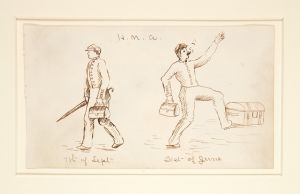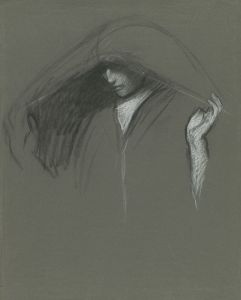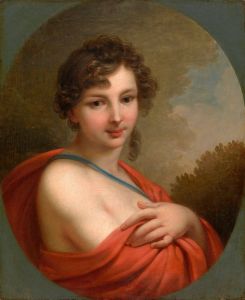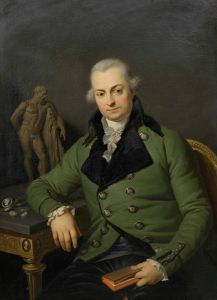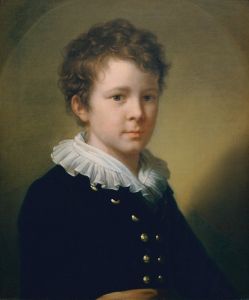
Portrait of a man
A hand-painted replica of Johann Baptist von Lampi the Elder’s masterpiece Portrait of a man, meticulously crafted by professional artists to capture the true essence of the original. Each piece is created with museum-quality canvas and rare mineral pigments, carefully painted by experienced artists with delicate brushstrokes and rich, layered colors to perfectly recreate the texture of the original artwork. Unlike machine-printed reproductions, this hand-painted version brings the painting to life, infused with the artist’s emotions and skill in every stroke. Whether for personal collection or home decoration, it instantly elevates the artistic atmosphere of any space.
Johann Baptist von Lampi the Elder was an Austrian painter known for his portraits and historical subjects. Born in 1751 in Romeno, in the County of Tyrol, Lampi became a prominent figure in the art world of the late 18th and early 19th centuries. He studied at the Academy of Fine Arts in Vienna and later became a member of the Academy, where he also taught. His work is characterized by its detailed realism and the ability to capture the personality and status of his subjects.
"Portrait of a Man" is one of the many portraits attributed to Johann Baptist von Lampi the Elder. While specific details about this particular painting are scarce, it is representative of Lampi's style and expertise in portraiture. His portraits often depicted members of the aristocracy, military figures, and other notable individuals of his time, reflecting the social and political milieu of the Austro-Hungarian Empire.
Lampi's technique involved a meticulous approach to capturing the likeness and character of his subjects. He was known for his ability to render the textures of fabrics and the subtle play of light and shadow on the human face. This skill is evident in "Portrait of a Man," where the subject's expression and attire are likely rendered with precision, offering insight into the individual's personality and social standing.
Throughout his career, Lampi received numerous commissions from the European nobility, which helped to establish his reputation as a leading portraitist of his era. His works were highly sought after, and he traveled extensively to fulfill commissions, including visits to Poland and Russia. In Russia, he was appointed as a court painter by Catherine the Great, further solidifying his status as an esteemed artist.
Lampi's influence extended beyond his own work, as he was part of a family of artists. His son, Johann Baptist von Lampi the Younger, followed in his footsteps and also became a renowned portrait painter. Together, they contributed significantly to the portraiture of their time, leaving a legacy that continued through subsequent generations.
While "Portrait of a Man" may not be as widely recognized as some of Lampi's other works, it remains an example of his skill in capturing the essence of his subjects. The painting reflects the artistic trends of the period, with an emphasis on realism and attention to detail that was characteristic of the late Baroque and early Neoclassical styles.
In summary, Johann Baptist von Lampi the Elder's "Portrait of a Man" exemplifies the artist's mastery in portraiture, showcasing his ability to convey the individuality and status of his subjects. Although specific information about this painting is limited, it stands as a testament to Lampi's enduring influence in the world of art.










